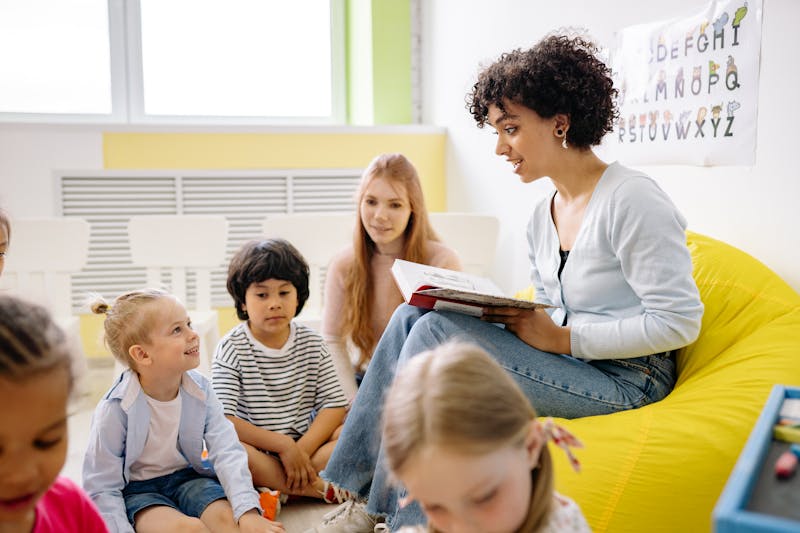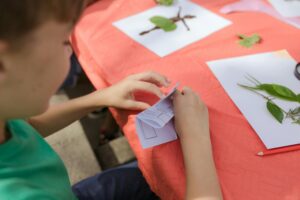As summer winds down and we look ahead to a new school year, it’s time to start planning for the back-to-school transition. After weeks of sunshine, unstructured play, and family outings, the idea of early mornings and routines can feel daunting for both parents and children. While our little one isn’t school-age yet, my husband Steve and I are already looking at ways to help her develop positive routines and make gradual transitions. Here are some practical back-to-school tips to help your family adjust smoothly and create a stress-free start to the new term.
1. Re-establish Routines Gradually
Summer often means relaxed bedtimes, slow mornings, and a break from the usual school routine. To avoid a sudden shock when school starts, begin re-establishing routines a week or two before term begins.
- Earlier Bedtimes: Shift bedtime back gradually, adjusting by 10–15 minutes each night. This way, children have time to readjust to waking up earlier without feeling too tired. If your child finds it difficult to wind down, try adding a calming bedtime ritual, like a quiet story or a warm drink.
- Morning Practice Runs: A few practice mornings help ease everyone back into school mode. Run through the morning routine, from waking up at the right time to getting dressed and having breakfast at a reasonable pace. Steve and I sometimes do this with our toddler, so she’s more used to the concept of structure, even if her “routine” is still fairly simple!
Having consistent times for meals, sleep, and quiet activities can also help create a predictable rhythm, making the actual start of school less of a shock to the system.
2. Prepare a Positive Mindset for School
Back-to-school anxiety is common, particularly if your child is starting a new school or moving up a year. Helping them develop a positive mindset about returning to school can make a big difference.
- Talk About School Positively: Encourage your child to think about what they’re excited to learn or who they’re looking forward to seeing. We plan to use this approach when our daughter starts nursery, helping her think about the friends and fun activities she’ll get to enjoy.
- Practice New Skills: If your child is moving to a new year or starting school for the first time, practise any new skills they might need. For younger children, this might mean practising packing a school bag or managing a lunchbox. Older children might benefit from a quick review of skills like tying shoelaces or using new stationery.
- Set Personal Goals: Older children might enjoy setting a small goal for the school year, such as trying a new sport or aiming to read a certain number of books. This can help them feel excited and give them a sense of purpose as they head back to school.
Creating a positive environment where school is presented as a place of learning and growth can help children approach it with curiosity and enthusiasm.
3. Get School Supplies Organised Early
There’s nothing like a last-minute scramble for school supplies to add stress to the back-to-school season. Get ahead by organising what you need a few weeks before term starts, which will make the first day feel much calmer for everyone.
- Make a Checklist: Schools often provide a list of required items, such as uniforms, stationery, and lunchboxes. Make a checklist and involve your child in gathering or buying these supplies. It can make them feel more prepared and give them ownership over their back-to-school preparations.
- Label Everything: Labelling clothes, bags, and supplies reduces the chance of losing items at school. You can use iron-on labels for clothing or permanent markers for lunchboxes and other belongings.
- Organise a School Zone at Home: Designate a place in your home where school bags, shoes, and uniforms are kept. Setting up a specific area for school items makes mornings easier and ensures everything is ready to go the night before. We even have a little spot for our daughter’s shoes and bag to create a similar sense of order for her.
4. Ease Back into Academic Skills
If your child has had a break from academic work over the summer, reintroducing some light learning activities can help them feel prepared. You don’t need to go overboard, but a bit of practice in reading, writing, or maths can make the return to school less daunting.
- Read Together: Reading is one of the best ways to help children transition back into learning mode. Pick a mix of fun books and ones related to school topics to keep them engaged. A short story before bed is a wonderful way to incorporate reading without making it feel like “work.”
- Practice Writing and Maths: Simple activities like writing postcards to friends, making lists, or playing number games can ease children back into using these skills. The idea is to keep things relaxed and enjoyable, without too much pressure.
- Visit Educational Spots: Museums, libraries, or local attractions with educational elements are fantastic ways to learn while having fun. These visits help spark children’s curiosity and excitement about learning, preparing them for the new term in a light-hearted way.
5. Establish a Wind-Down Routine
A good night’s sleep is essential for a successful school day. After a summer of late nights, it’s helpful to establish a wind-down routine that helps your child relax and sleep well.
- Reduce Screen Time Before Bed: As school starts, consider reducing screen time in the evening, as screens can disrupt sleep. Replace screens with calming activities, like reading a bedtime story, drawing, or doing puzzles.
- Create a Calming Space: Make your child’s room a calm and quiet place where they can relax before bed. Consider soft lighting, white noise, or other relaxing elements that encourage sleep. We’ve started using dim lights in our toddler’s room, which helps signal bedtime and calms her before sleep.
- Consistent Sleep Schedule: Aim for a consistent sleep and wake-up time, even on weekends, to help your child get back into a good rhythm. Consistency helps the body adjust and can make early school mornings much easier.
6. Involve the Whole Family in the Transition
The back-to-school season affects the entire family, so it can be helpful to include everyone in creating a positive, organised transition. Steve and I like to discuss our plans together, making sure we’re aligned on what needs to be done and how we can support each other.
- Assign Tasks: Share the responsibilities, whether it’s preparing school lunches, helping with homework, or organising after-school activities. Having clear roles can make the routine run more smoothly.
- Plan Family Check-Ins: Weekly check-ins during the term are a great way to discuss everyone’s week, address any challenges, and plan for the coming days. This can help children feel supported and ensure everyone stays connected despite the busy school schedule.
- Celebrate the Start of Term: Consider a small family celebration for the start of the school year, like a special dinner or treat. This makes the transition feel special and reinforces a positive attitude towards school.
Conclusion
Preparing for back-to-school doesn’t have to be stressful. By re-establishing routines, encouraging a positive mindset, and planning ahead, you can help ease the whole family into the school year with confidence. For us, it’s all about balancing structure with relaxation, helping our toddler understand routines early, and creating a supportive environment where the entire family feels ready to take on the new term. Embrace the change, take things one day at a time, and make this school year a happy, successful one for everyone!














Subscribe and Follow